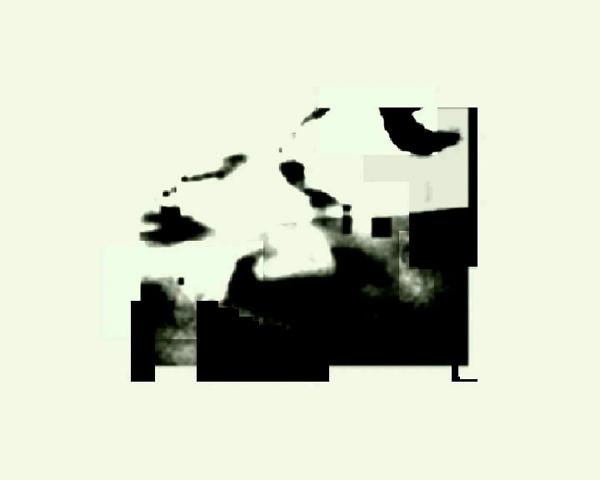la petite illusion
A little story of passions is told in "la petite illusion": heavy breathing garnished by a jazzy bass line, a kiss, a woman falls into water at night. While the works title is an ironic reference to Jean Renoirs 1937 La grande illusion, the association is a dead end: Neither the images nor the soundtrack contains a direct quotation of Renoirs pacifist fable, nor is a similar motif touched upon. The patina of early sound film which is celebrated in "la petite illusion" stands as the sole vague connection to the grand illusion - the sound and the look, the aesthetic stereotypes of Francophone cinema made between the wars. Michaela Schwentners chromatically ascetic electronic manipulation of found sounds and images is a study of emotional images from the history of cinema which is carefully kept in the air.
The story told in la petite illusion is itself a kind of little illusion: It has the mere suggestion of a plot, a kind of mini-melodrama with built-in interference. While the narrative lines remain unresolved, irrationally linked as if in a dream, the films images themselves become unstable: They seem to melt, run into one another; just after coming together they fall apart, speed up, slow down, hammered with the artists omnipresent influence. Animated Cubism is the term she gave to her work method: The flat film images are committed to a virtual digital space, a different kind of illusion, and the material is released into a state of partial abstraction. In the referential space, filled with romantic ruins of images, fragments of emotional declamation and salon conversation in French, with canned music and the bright singing of anonymous film divas, emotions are transformed into signals, and the individual parts of trivial film tragedies are translated back into neutral cinematic symbols.
(Stefan Grissemann)
Translation: Steve Wilder


